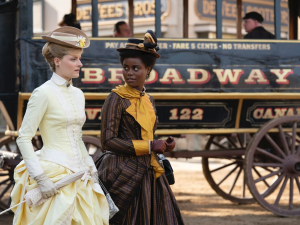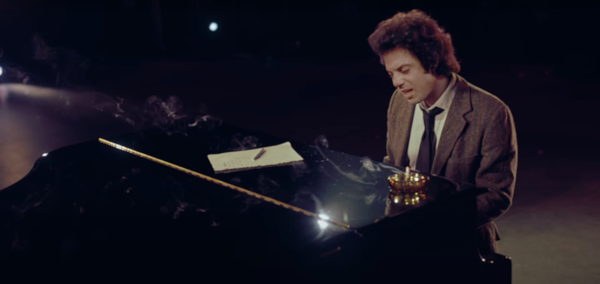A world gone mad for hit series ‘Mad Men’
September 30, 2010
“It’s a business of sadists and masochists and you know which one you are,” said the secretary. Poignant and precise, “Mad Men” can best be described as a television series that chronicles the lives of those who take pleasure in receiving or inflicting pain.
Set against a backdrop of cigarette smoke and liquor cabinets, AMC’s critically acclaimed series depicts the glory days of Madison Avenue’s advertising executives—capturing the social and professional tendencies of a bygone age in American history.
What’s more, as the program documents the trials and tribulations of the 1960s, “Mad Men” illustrates the emotions, or lack thereof, through the perspective of a few amoral New Yorkers who, according to the show’s protagonist, Don Draper, live “like there’s no tomorrow, because there isn’t one.”
Therein lies one of the strikingly brilliant qualities of “Mad Men.” Specifically, the viewer desires to know how each character will confront the political and cultural transformations that lurk just around the corner. Matthew Weiner, the show’s creator, began his retrospective tour of the mid-20th century in early 1960 and has subsequently navigated half way through the decade.
Currently, the program’s fourth season is stationed in mid-1965 where the turnover in various social mentalities has become progressively apparent—forcing “Mad Men’s” central figures to adapt or, at the very least, recognize the new world order that is slowly invading their way of life.
While the show began with suffocating sexism and disregard for “Reader’s Digest” studies that related smoking to cancer, the male characters are now forced to acknowledge the growing influence of women in the workplace and it appears as if coughing has become an increasingly prevalent element of dialogue as of late.
As “Mad Men” is scheduled to conclude next month, many have suggested that the show’s latest season is the best yet. High praise for the program has already garnered universal applause—winning the Emmy for Outstanding Drama Series in its first three seasons.
For Weiner, “Mad Men’s” success is doubly enjoyable in part because it was initially rejected by HBO and Showtime before AMC agreed to finance production of its first original program.
Beyond the effective storytelling and ability to portray the volatile nature of the 1960s, “Mad Men” offers a near-perfect aesthetic interpretation of everyday life some 50 years ago. As a result, each episode is presented with stunning detail and allows one to enjoy a television series for plotlines as well as historical accuracy.
A cocktail in one hand, a cigarette in the other, “Mad Men” allows the viewer to indulge in activities now perceived as social taboos from the comfort of one’s couch. The show’s success, however, is in all likelihood derived from multiple sources and cannot necessarily be underpinned by a single attribute. Nonetheless, Don Draper’s evaluation of advertising may help to expose an overarching feature that has fueled “Mad Men’s” success thus far. Draper said, “Advertising is based on one thing: happiness. And do you know what happiness is? Happiness is the smell of a new car. It’s freedom from fear. It’s a billboard on the side of a road that screams with reassurance that whatever you’re doing is OK. You are OK.”












